Application of Lightweight Structure in Automobile Bumper Beam: A Review
Abstract
:1. Introduction
2. Material of the Bumper Beam
2.1. Traditional Material
2.2. Composite Material
2.3. The High Strain Rate Properties of Materials
3. Fabrication of Bumper Beam
3.1. Fabrication of Traditional Materials Bumper Beam
3.2. Fabrication of Composite Materials Bumper Beam
4. Performance of Lightweight Bumper Beam
4.1. Industry Regulations and Performance Test Methods

4.2. Theory of Crash Simulation Analysis
4.3. Performance Test Experiment of Composites Bumper Beam
4.4. Finite Element Analysis of Bumper Beam
4.5. Optimization of Bumper Beam
5. Prospect of Development of Bumper Beam
6. Conclusions
- (1)
- From a lightweight perspective, the best choice is to use high-strength steel and composites with a better performance and lower cost to improve the structure of bumper beams. With the gradual improvement in composites technology in China in recent years, a tendency toward the usage of composite materials to produce vehicles to attain a light weight was formed, which means that the lightweight design of automobile structures is a critical study direction. This paper discusses the benefits of lightweight composite materials compared to traditional bumper beams from the material itself. The experimentations listed prove that the characterization performance of the bumper beams is better than that of the steel and aluminum alloy after using the composites, and the consequence of being lightweight is remarkable. The future development prospects of thermoplastic composites are more profitable than thermoset composites due to their intense designability and being environmentally friendly.
- (2)
- From the perspective of fabrication, the process of traditional bumper beams is complicated and accompanied by the waste of materials. The fabrication of composite bumper beams tends to develop with more research investment in recent years, such as the GMT, RTM, and WCM. This procedure can create products with an excellent performance and can strengthen the capability of the bumper beam by customizing it. Straightforward operation and automation are advantages.
- (3)
- The performance of the composite bumper beam in the application is optimized and experimented with in an experimental analysis and finite element analysis. The composite bumper beam has better impact resistance and a higher class of lightweight in the test of an impact compared with that of steel. The cost of the investment in composite materials study is relatively high in the initial stage, but it will decrease with the improvement and maturity of the process. After that, the application of composite materials in an automobile lightweight will be additionally extensive. The development and popularization of new energy vehicles advance the market for composite materials in lightweight automobiles. With the market enlargement, using composite materials for lightweight vehicle structures will be a concern for manufacturers.
Author Contributions
Funding
Institutional Review Board Statement
Informed Consent Statement
Data Availability Statement
Conflicts of Interest
References
- Xue, Y. Design and Multi-Objective Optimization of Vehicle Bumper Beams Prepared in LFT-PP. Master’s Thesis, Shandong University, Jinan, China, 2021. [Google Scholar] [CrossRef]
- Jiang, R.C.; Zhang, T.; Sun, H.X.; Liu, D.W.; Chen, H.M.; Wang, D.F. Study on Lightweighting of CFRP Bumper Beam Using Entropy-based Approach. Automot. Eng. 2021, 43, 421–428. [Google Scholar] [CrossRef]
- Du, Y. Research on the Forming Process and Performance of Carbon Fiber Composite Car Inner Plate and Anti-collision Beam. Master’s Thesis, Donghua University, Shanghai, China, 2019. [Google Scholar] [CrossRef]
- Cheon, S.S.; Choi, J.H. Development of the composite bumper beam for passenger cars. Compos. Struct. 1995, 32, 491–499. [Google Scholar] [CrossRef]
- Evans, D. Consistency of Thermoplastic Bumper Beam Impact Performance; SAE Technical Paper; SAE International: Warrendale, PA, USA, 1998. [Google Scholar]
- Davoodi, M.M.; Sapuan, S.M.; Ahmad, D.; Aidy, A.; Khalina, A.; Jonoobi, M. Concept selection of car bumper beam with developed hybrid bio-composite material. Mater. Des. 2011, 32, 4857–4865. [Google Scholar] [CrossRef]
- Grajcar, A.; Skowronek, A.; Radwański, K. Mechanical behavior and stability of dispersed retained austenite in thermomechanically rolled and isothermally-treated TRIP-aided multiphase steel. Mater. Sci. Eng. A 2022, 830, 142300. [Google Scholar] [CrossRef]
- Grajcar, A.; Skrzypczyk, P.; Woźniak, D. Thermomechanically rolled medium-Mn steels containing retained austenite. Arch. Metall. Mater. 2014, 59, 1691–1697. [Google Scholar] [CrossRef]
- Yang, X.J.; Zhang, Z.M.; Zheng, J.; Duan, S.Y. Multi-conditions/Multi-objective Optimization Design of the Variable Cross-section of Composite Front Bumper. Automot. Eng. 2015, 37, 1130–1137. [Google Scholar] [CrossRef]
- Zeng, F.; Xie, H.; Liu, Q.; Li, F.; Tan, W. Design and optimization of a new composite bumper beam in high-speed frontal crashes. Struct. Multidiscip. Optim. 2016, 53, 115–122. [Google Scholar] [CrossRef]
- Nava, M.G.; Cruz-Ramírez, A.; Rosales, M.Á.S.; Gutiérrez-Pérez, V.H.; Sánchez-Martínez, A. Fabrication of aluminum alloy foams by using alternative thickening agents via melt route. J. Alloys Compd. 2017, 698, 1009–1017. [Google Scholar] [CrossRef]
- Kolhe, V.A.; Baviskar, P.R.; Patil, M.M. Bending Characteristics of Foam Filled Mild Steel Bumper Beam under Gradual Loading Condition. Int. J. Appl. Eng. Res. 2018, 13, 64–68. [Google Scholar]
- Joshi, V.V.; Jana, S.; Li, D.; Garmestani, H.; Nyberg, E.; Lavender, C. High shear deformation to produce high strength and energy absorption in Mg alloys. In Magnesium Technology 2014; Springer: Cham, Switzerland, 2014; pp. 83–88. [Google Scholar]
- Zheng, Y.F.; Ji, Q.H. Tension analysis of Carbon Fiber Composite Bumper Crash Beam. Shanghai Auto 2018, 1, 47–51. [Google Scholar]
- Chen, J.; Tang, A.T.; Tian, K.; Liu, Z. Lightweight and Optimized Design of Carbon Fiber Composite Front Bumper Beam. Automot. Eng. 2020, 42, 390–395. [Google Scholar] [CrossRef]
- Neelima, V.; Rao, J.B.B.; Viswatej, K. Design and Analysis of Bumper Beam with Composite Materials. Int. J. Mag. Eng. Technol. Manag. Res. 2016, 3, 253–259. [Google Scholar]
- Dixit, Y.; Dhaliwal, G.S.; Newaz, G.; Begeman, P. Comparative investigation for the performance of steel and carbon fiber composite front bumper crush-can (FBCC) structures in quarter-point impact crash tests. J. Dyn. Behav. Mater. 2020, 6, 96–111. [Google Scholar] [CrossRef]
- Agunsoye, J.O.; Odumosu, A.K.; Dada, O. Novel epoxy-carbonized coconut shell nanoparticles composites for car bumper application. Int. J. Adv. Manuf. Technol. 2019, 102, 893–899. [Google Scholar] [CrossRef]
- Ramakrishna, G.; Purushothaman, K.; Sivakumar, E.R.; Sreenivasan, M. An analysis on natural fiber composite materials. Mater. Today Proc. 2021, 45, 6794–6799. [Google Scholar] [CrossRef]
- Roopesh, E.S.; Rao, L.B. Design and Analysis of an Automotive Frontal Bumper Beam for Low-Speed Crashes. J. Multidiscip. Eng. Sci. Technol. 2015, 2, 994–998. [Google Scholar]
- Grauers, L. Failure Analysis of a Short Fibre Composite Bumper Beam-Physical Experiments and FE-Simulations. Master’s Thesis, Department of Applied Mechanics Division of Material and Computational Mechanics Chalmers University of Technology, Göteborg, Sweden, 2010. [Google Scholar]
- Zhang, J.Q.; Shi, L.; Han, F.; Xiao, H. Study on Front Al Impact Performance Based on the Roll-formed Lightweight UHSS Front Bumper. Automob. Appl. Technol. 2016, 3, 141–144+155. [Google Scholar] [CrossRef]
- Belingardi, G.; Beyene, A.T.; Koricho, E.G.; Martorana, B. Crashworthiness of integrated crash-box and bumper beam made by die-forming composite. In Proceedings of the 16th European Conference on Composite Materials, Seville, Spain, 22–26 June 2014. [Google Scholar]
- Adesina, O.T.; Jamiru, T.; Sadiku, E.R.; Ogunbiyi, O.F.; Beneke, L.W. Mechanical evaluation of hybrid natural fibre–reinforced polymeric composites for automotive bumper beam: A review. Int. J. Adv. Manuf. Technol. 2019, 103, 1781–1797. [Google Scholar] [CrossRef]
- Amaro, A.M.; Neto, M.A.; Cirne, J.S.; Reis, P.N. Mechanical characterization of different aluminium foams at high strain rates. Materials 2019, 12, 1428. [Google Scholar] [CrossRef] [Green Version]
- Wróbel, I.; Skowronek, A.; Grajcar, A. A Review on Hot Stamping of Advanced High-Strength Steels: Technological-Metallurgical Aspects and Numerical Simulation. Symmetry 2022, 14, 969. [Google Scholar] [CrossRef]
- Chen, B. A review of the development of composite process equipment at home and abroad. Compos. Sci. Eng. 2022, 1–28. [Google Scholar] [CrossRef]
- Ren, M.W.; Hong, Z.G.; Zhou, Y.J.; Yin, S.; Tian, Y.L.; Ma, S.; Chen, Y.B.; Fan, G.H. Low-speed collision optimization design of composite bumper. Acta Mater. Compos. Sin. 2022, 39, 854–862. [Google Scholar] [CrossRef]
- Liu, Q.; Lu, Y.; Jiang, J.; Yan, X.; Li, Q. Experimental and numerical investigation into the dynamic impact responses of CFRP header rail. Thin-Walled Struct. 2022, 181, 110069. [Google Scholar] [CrossRef]
- Zhao, X.T. Research on Fast Curing Epoxy Resin for RTM Process. Master’s Thesis, North University of China, Taiyuan, China, 2020. [Google Scholar] [CrossRef]
- Wang, X.Z.; Bo, D.H.; Ma, J.C. Research on Composite Molding Design Based on RTM Technology. Fiber Compos. 2021, 38, 47–51. [Google Scholar]
- Park, G.; Park, H. Structural design and test of automobile bonnet with natural flax composite through impact damage analysis. Compos. Struct. 2018, 184, 800–806. [Google Scholar] [CrossRef]
- Taub, A.; De Moor, E.; Luo, A.; Matlock, D.K.; Speer, J.G.; Vaidya, U. Materials for automotive lightweighting. Annu. Rev. Mater. Res. 2019, 49, 327–359. [Google Scholar] [CrossRef]
- Yu, L.; Wu, S.; Feng, Y.; Zhao, C. Development and Prospect of Additive Manufacturing Technology in Automobile Field. Acad. J. Sci. Technol. 2022, 3, 243–246. [Google Scholar] [CrossRef]
- Sun, X.Q. A Study on the Crashworthiness of Passenger Car in Low-Speed Front Impact. Master’s Thesis, Hunan University, Changsha, China, 2011. [Google Scholar]
- Kim, D.H.; Kang, S.Y.; Kim, H.J.; Kim, H.S. Strain rate dependent mechanical behavior of glass fiber reinforced polypropylene composites and its effect on the performance of automotive bumper beam structure. Compos. Part B Eng. 2019, 166, 483–496. [Google Scholar] [CrossRef]
- Zhang, Z.M. Research on Optimization Design of Composite Automotive Bumper Beam with Variable Thickness. Master’s Thesis, Hunan University, Changsha, China, 2014. [Google Scholar]
- Wang, A.J.; Dai, D.; Qiao, X. Lagranian Finite Element Method and Its Application in High Velocity Impact Phenomena. J. Nanjing Univ. Aeronaut. Astronaut. 1998, 6, 84–88. [Google Scholar]
- Liu, Z. Structure Optimization Design and Process Research on CFRP Bumper Beam. Master’s Thesis, Jilin University, Changchun, China, 2020. [Google Scholar] [CrossRef]
- Park, D.K. A development of simple analysis model on bumper barrier impact and new IIHS bumper impact using the dynamically equivalent beam approach. J. Mech. Sci. Technol. 2011, 25, 3107–3114. [Google Scholar] [CrossRef]
- Park, D.K. Bumper optimum design using the dynamically equivalent beam under various impact conditions. Int. J. Automot. Technol. 2014, 15, 937–943. [Google Scholar] [CrossRef]
- Kim, K.J.; Won, S.T. Effect of structural variables on automotive body bumper impact beam. Int. J. Automot. Technol. 2008, 9, 713–717. [Google Scholar] [CrossRef]
- Muhammad Nasiruddin, S.; Hambali, A.; Rosidah, J.; Widodo, W.S.; Ahmad, M.N. A review of energy absorption of automotive bumper beam. Int. J. Appl. Eng. Res. 2017, 12, 238–245. [Google Scholar]
- Lorenzo, L.; Mantey, E.J.; Shah, P. Hybrid Metal-Composite Bumper Beam-Design and Analysis; SAE Technical Paper; SAE International: Warrendale, PA, USA, 1989. [Google Scholar]
- Brown, K.A.; Brooks, R.; Warrior, N.A. The static and high strain rate behaviour of a commingled E-glass/polypropylene woven fabric composite. Compos. Sci. Technol. 2010, 70, 272–283. [Google Scholar] [CrossRef]
- Duan, S.; Yang, X.; Tao, Y.; Mo, F.; Xiao, Z.; Wei, K. Experimental and numerical investigation of Long Glass Fiber Reinforced Polypropylene composite and application in automobile components. Transport 2018, 33, 1135–1143. [Google Scholar] [CrossRef] [Green Version]
- Yang, S.; Sun, Y.; Qi, C. Performance assessment and optimal design of hybrid material bumper for pedestrian lower extremity protection. Int. J. Mech. Sci. 2020, 165, 105210. [Google Scholar] [CrossRef]
- Çam, S.; Sofuoğlu, H. An Investigation on Crashworthiness Performance of Adhesive Bonding in Automobile Hybrid Front Bumper System Subjected to High-Speed Impact. Int. J. Impact Eng. 2022, 173, 104478. [Google Scholar] [CrossRef]
- Sahu, S.; Mondal, D.P.; Goel, M.D.; Ansari, M.Z. Finite element analysis of AA1100 elasto-plastic behaviour using Johnson-Cook model. Mater. Today Proc. 2018, 5, 5349–5353. [Google Scholar] [CrossRef]
- Hasan, M.S.; De Pellegrin, D.; Clegg, R.; Yan, C. Johnson-Cook model parameters determination for 11% and 14% Mn-Steel. Mater. Sci. Eng. B 2022, 283, 115788. [Google Scholar] [CrossRef]
- Wang, X.; Hassani, M. Ultra-high strain rate constitutive modeling of pure titanium using particle impact test. J. Appl. Mech. 2020, 87, 091007. [Google Scholar] [CrossRef]
- Zhang, S.; Wang, Q.; Zhou, W. Implementation of the Tresca yield criterion in finite element analysis of burst capacity of pipelines. Int. J. Press. Vessel. Pip. 2019, 172, 180–187. [Google Scholar] [CrossRef]
- Li, X.; Ma, D.; Liu, H.; Gong, X.; Zhang, C.; Li, Y. Assessment of failure criteria and damage evolution methods for composite laminates under low-velocity impact. Compos. Struct. 2019, 207, 727–739. [Google Scholar] [CrossRef]
- David Müzel, S.; Bonhin, E.P.; Guimarães, N.M.; Guidi, E.S. Application of the finite element method in the analysis of composite materials: A review. Polymers 2020, 12, 818. [Google Scholar] [CrossRef]
- Lin, S.; Yang, L.; Xu, H.; Jia, X.; Yang, X.; Zu, L. Progressive damage analysis for multiscale modelling of composite pressure vessels based on Puck failure criterion. Compos. Struct. 2021, 255, 113046. [Google Scholar] [CrossRef]
- Xiao, J.T.; Zhang, S.; Xu, R.L.; Xu, L.Y. Lightweight Design and Optimization of Carbon Fiber Composite Bumper Beam and Aluminum Alloy Crash Box for Low Speed Impact. J. Henan Univ. Sci. Technol. 2021, 42, 25–32+3–4. [Google Scholar] [CrossRef]
- Li, J.X. Simulation Analysis and Optimization of Automobile Front Anti-collision Beam Based on LS-DYNA. Agric. Equip. Veh. Eng. 2021, 59, 122–126. [Google Scholar]
- Hambali, A.; Sapuan, S.; Ismail, N.; Nukman, Y. Material selection of polymeric composite automotive bumper beam using analytical hierarchy process. J. Cent. South Univ. Technol. 2010, 17, 244–256. [Google Scholar] [CrossRef]
- Praveen Jerish, K.; Rakesh Kumar, J.; Ramakrishnan, R.; Vijay Sekar, K.S. Design and Analysis of a Novel Hybrid Car Bumper Using Non-Newtonian Fluid and High-Density Polyethylene. In Trends in Mechanical and Biomedical Design; Akinlabi, E., Ramkumar, P., Selvaraj, M., Eds.; Lecture Notes in Mechanical Engineering; Springer: Singapore, 2021. [Google Scholar] [CrossRef]
- Karthikeyan, M.; Jenarthanan, M.P.; Giridharan, R.; Shunmugesh, K. Investigation on crash analysis of a frontal car bumper. Trans. Indian Inst. Met. 2019, 72, 2699–2709. [Google Scholar] [CrossRef]
- Wang, Y.L.; Zhao, W.Z.; Zhou, G.; Wang, C.; Gao, Q. Parametric design strategy of a novel cylindrical negative Poisson’s ratio jounce bumper for ideal uniaxial compression load-displacement curve. Sci. China Technol. Sci. 2018, 61, 1611–1620. [Google Scholar] [CrossRef]
- Xue, Y.; Zhao, H.; Zhang, Y.; Gao, Z.; Zhai, D.; Li, Q.; Zhao, G. Design and multi-objective optimization of the bumper beams prepared in long glass fiber-reinforced polypropylene. Polym. Compos. 2021, 42, 2933–2947. [Google Scholar] [CrossRef]
- Huang, W.S. Analysis and Optimization of the Low-Speed Impact Performance of the Automobile Front Bumper. Master’s Thesis, South China University of Technology, Guangzhou, China, 2019. [Google Scholar] [CrossRef]
- Zhang, X.; Zhao, X.Y.; Lan, X.; Chen, L.L. Lightweight and optimized design of carbon fiber composite front bumper beam. Compos. Sci. Eng. 2019, 8, 98–103. [Google Scholar]
- Hu, Y.; Liu, C.; Zhang, J.; Ding, G.; Wu, Q. Research on carbon fiber–reinforced plastic bumper beam subjected to low-velocity frontal impact. Adv. Mech. Eng. 2015, 7, 1687814015589458. [Google Scholar] [CrossRef] [Green Version]
- Beyene, A.T.; Koricho, E.G.; Belingardi, G.; Martorana, B. Design and manufacturing issues in the development of lightweight solution for a vehicle frontal bumper. Procedia Eng. 2014, 88, 77–84. [Google Scholar] [CrossRef]
- Serkan, Ö.; Karagöz, S.; Beytüt, H. Crashworthiness investigation of vehicle front bumper beam with different cross-sections under axial dynamic load. Eur. J. Tech. 2020, 10, 97–105. [Google Scholar]
- Zhong, W.D.; Wang, D.F.; Li, J. Research and multi-objective optimization for low speed collision of composite bumper beam. J. Nanjing Tech Univ. 2019, 41, 463–471. [Google Scholar]
- Charkha, A.N.; Gainger, S.G. Impact analysis of Composite Sandwich Structure Bumper Beam for Passenger Vehicle. Int. J. Eng. Res. Technol. 2014, 3, 1303–1306. [Google Scholar]
- Wang, Z.; Song, K. Application of Building Block Approach on Crashworthiness Design of Composite Vehicular Structures. Fibers Polym. 2022, 23, 1701–1712. [Google Scholar] [CrossRef]
- Gil, H.M.; Kwon, Y.D.; Kim, D.H.; Kim, Y.S. Minimizing pedestrian lower-leg injury considering rate dependence of the plastic energy absorber. Int. J. Automot. Technol. 2016, 17, 829–841. [Google Scholar] [CrossRef]
- Chen, S.W.; Yu, Z.X. Multi-objective Optimization Design of Crashworthiness and Lightweight of Anti-Collision Beam. Automob. Appl. Technol. 2021, 46, 43–46. [Google Scholar] [CrossRef]
- Tanlak, N.; Sonmez, F.O.; Senaltun, M. Shape optimization of bumper beams under high-velocity impact loads. Eng. Struct. 2015, 95, 49–60. [Google Scholar] [CrossRef]
- Zhang, J.; Ning, L.; Hao, Y.; Sang, T. Topology optimization for crashworthiness and structural design of a battery electric vehicle. Int. J. Crashworthiness 2021, 26, 651–660. [Google Scholar] [CrossRef]
- Zhang, W.; Xu, J. Advanced lightweight materials for Automobiles: A review. Mater. Des. 2022, 221, 110994. [Google Scholar] [CrossRef]




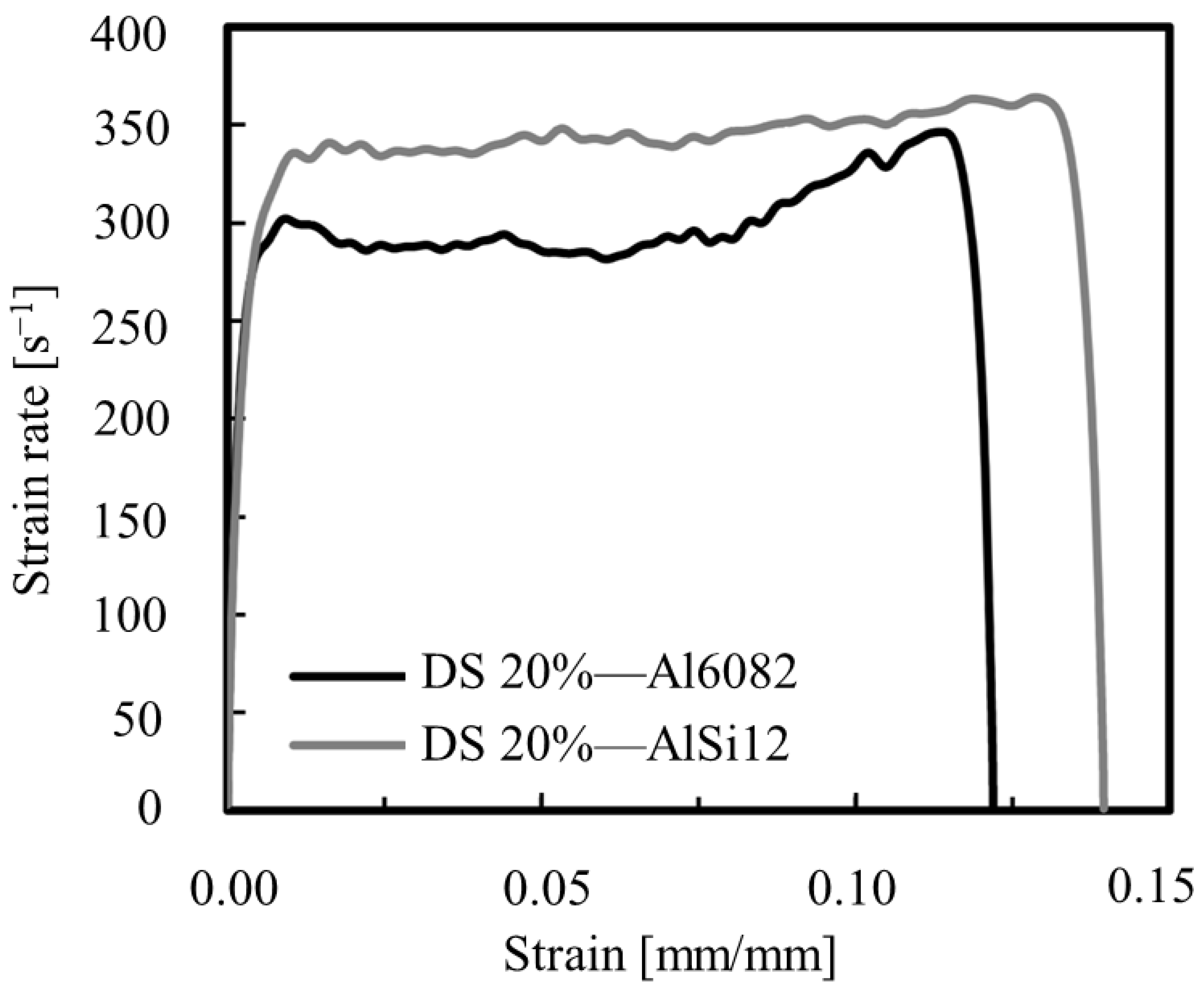
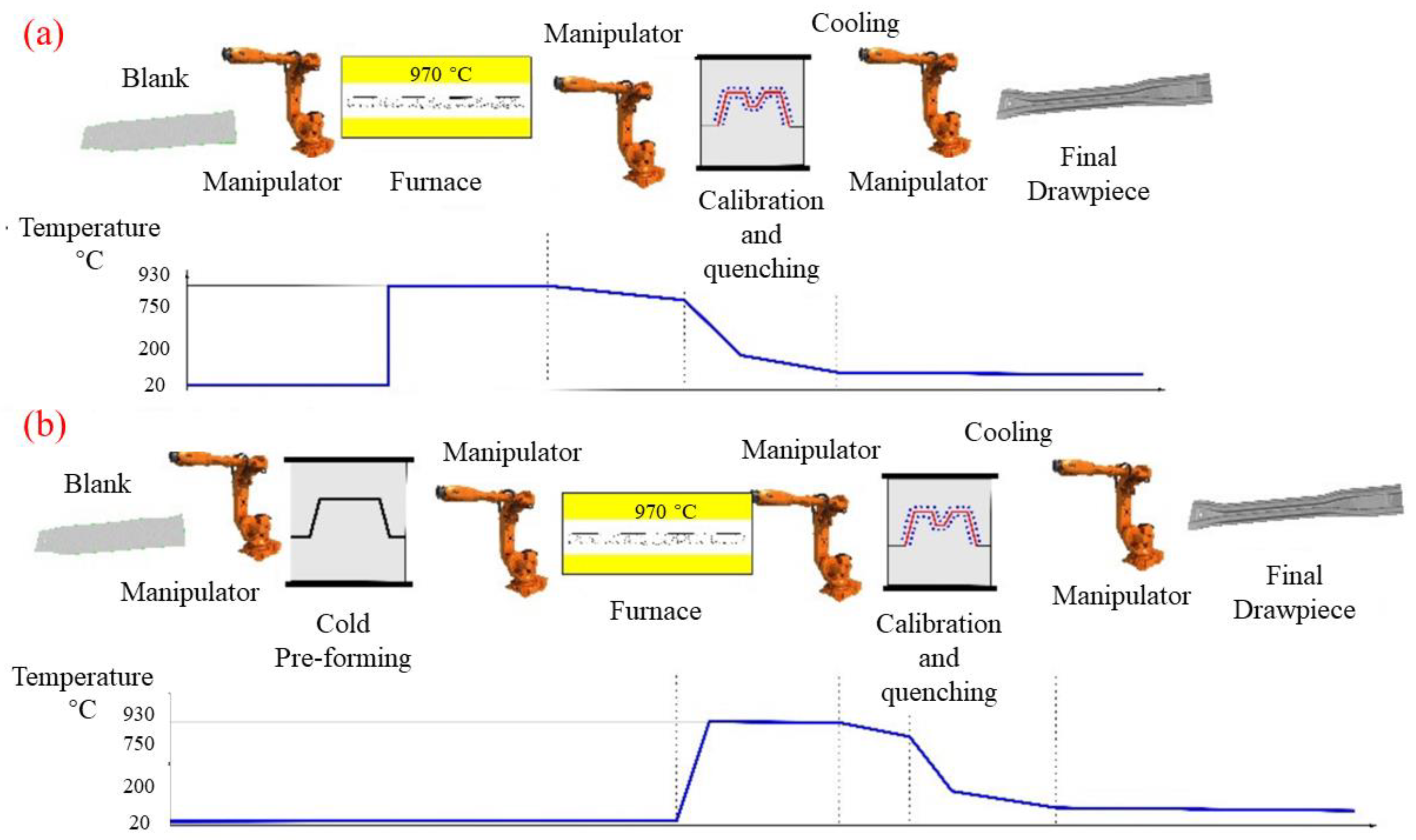
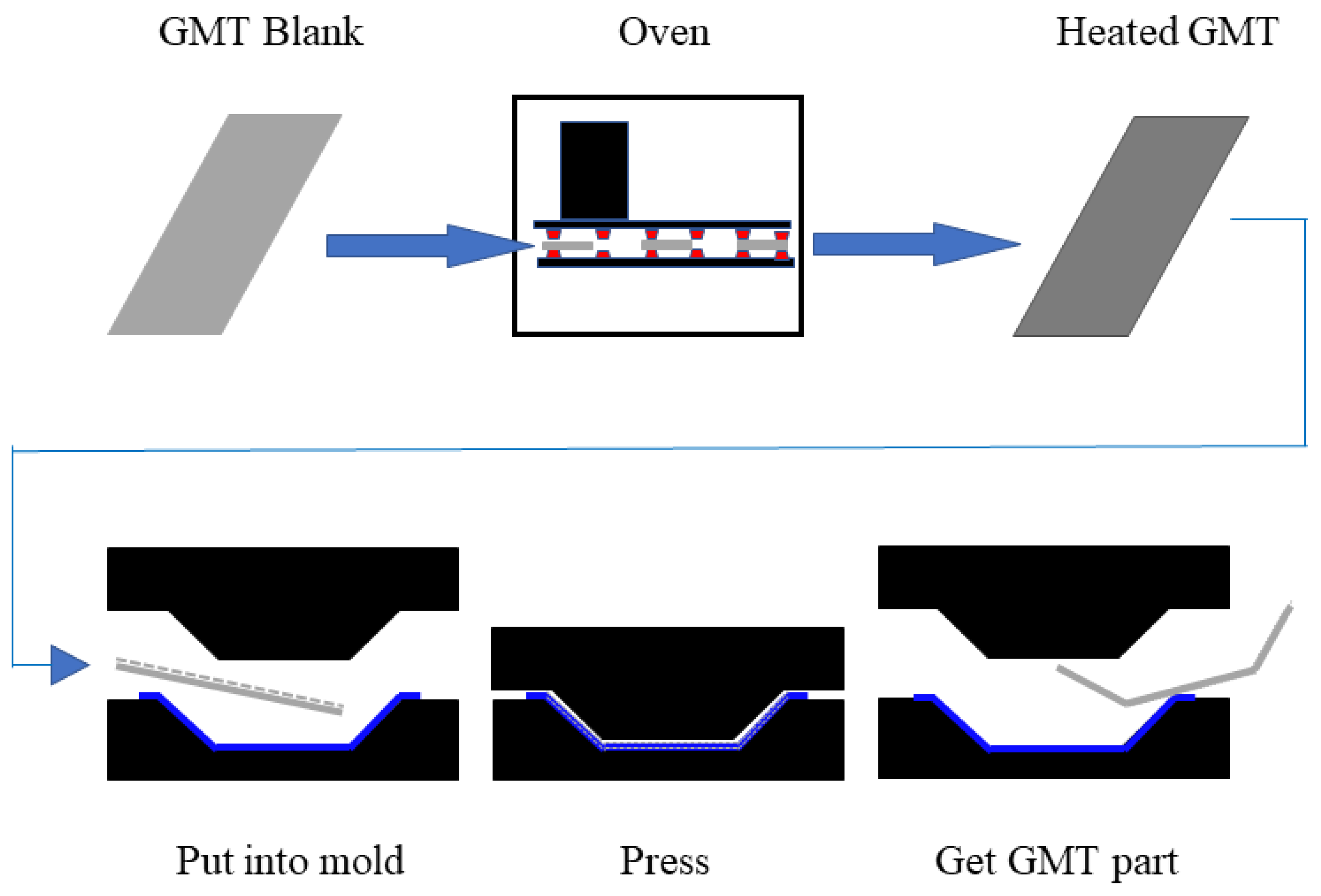
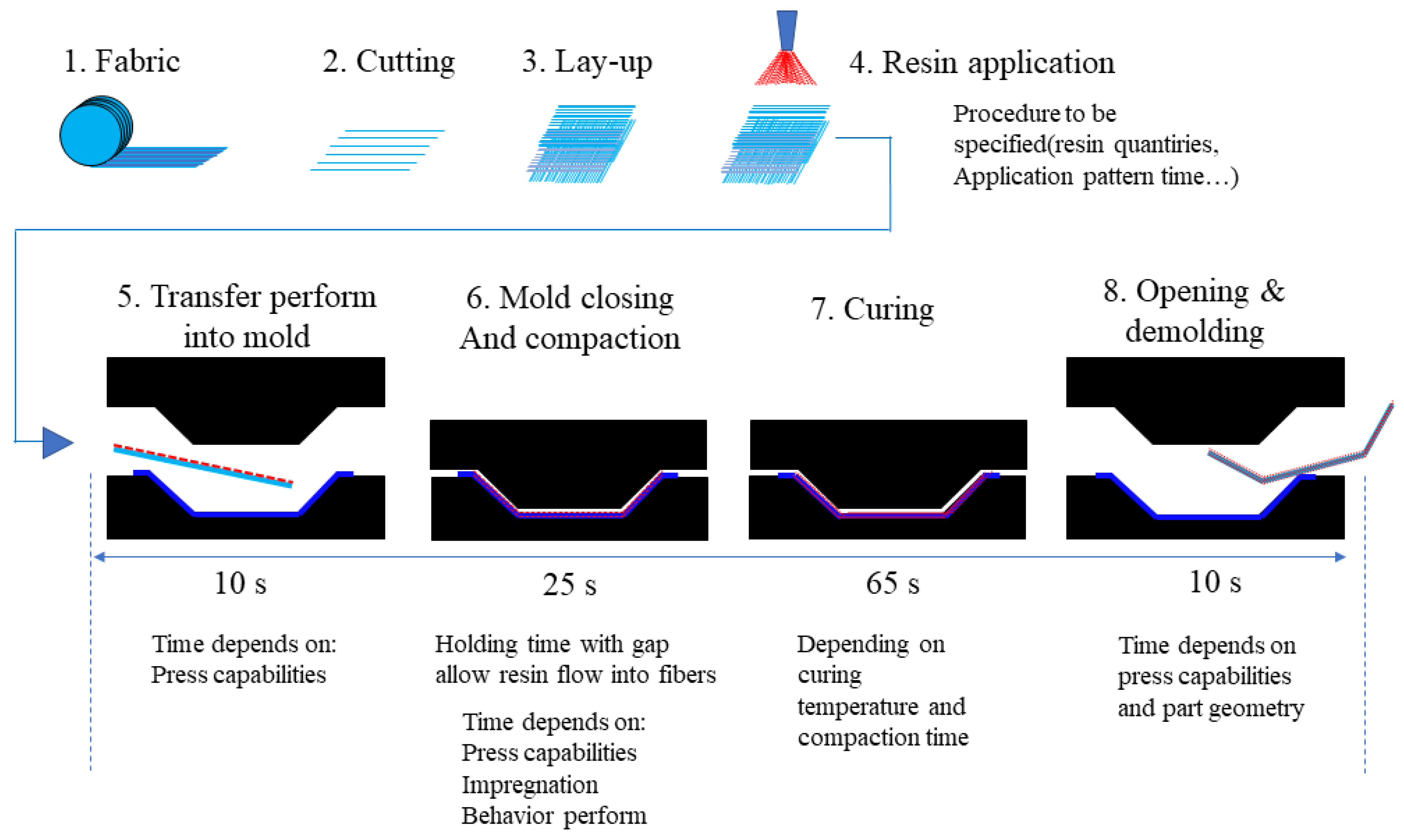
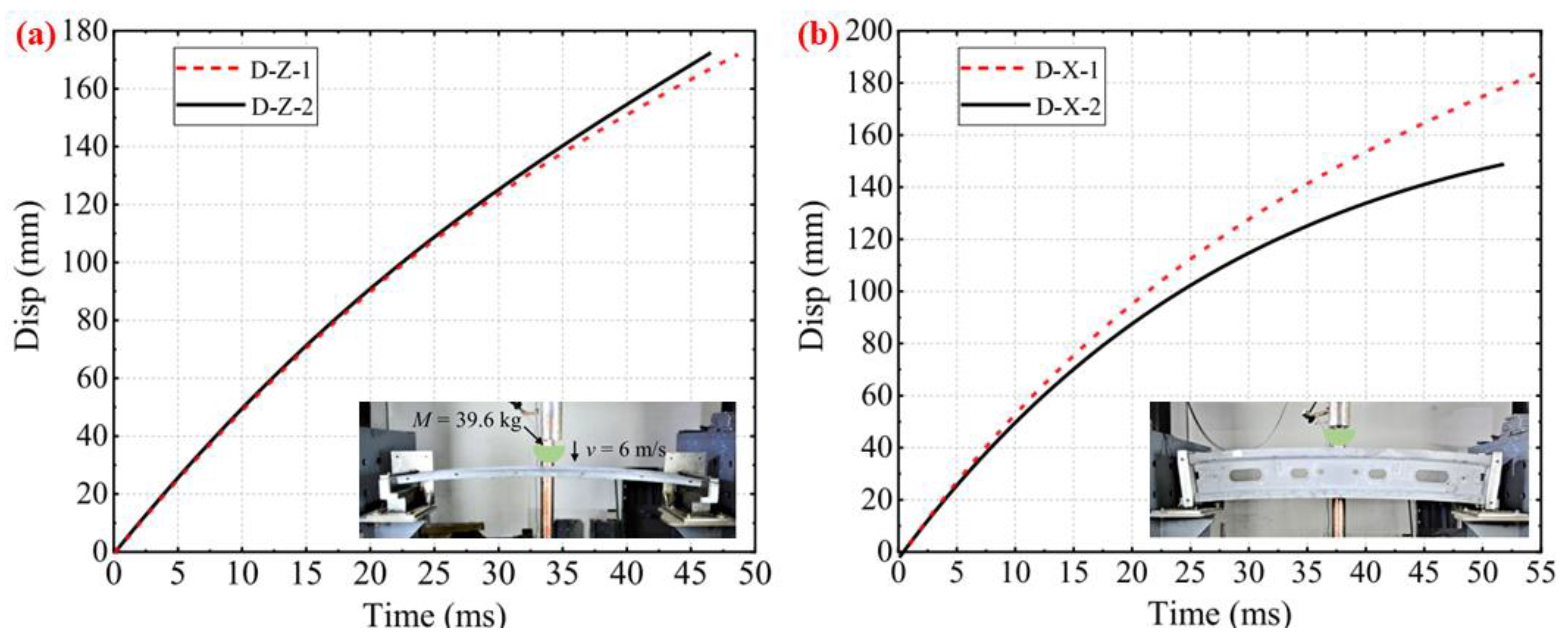
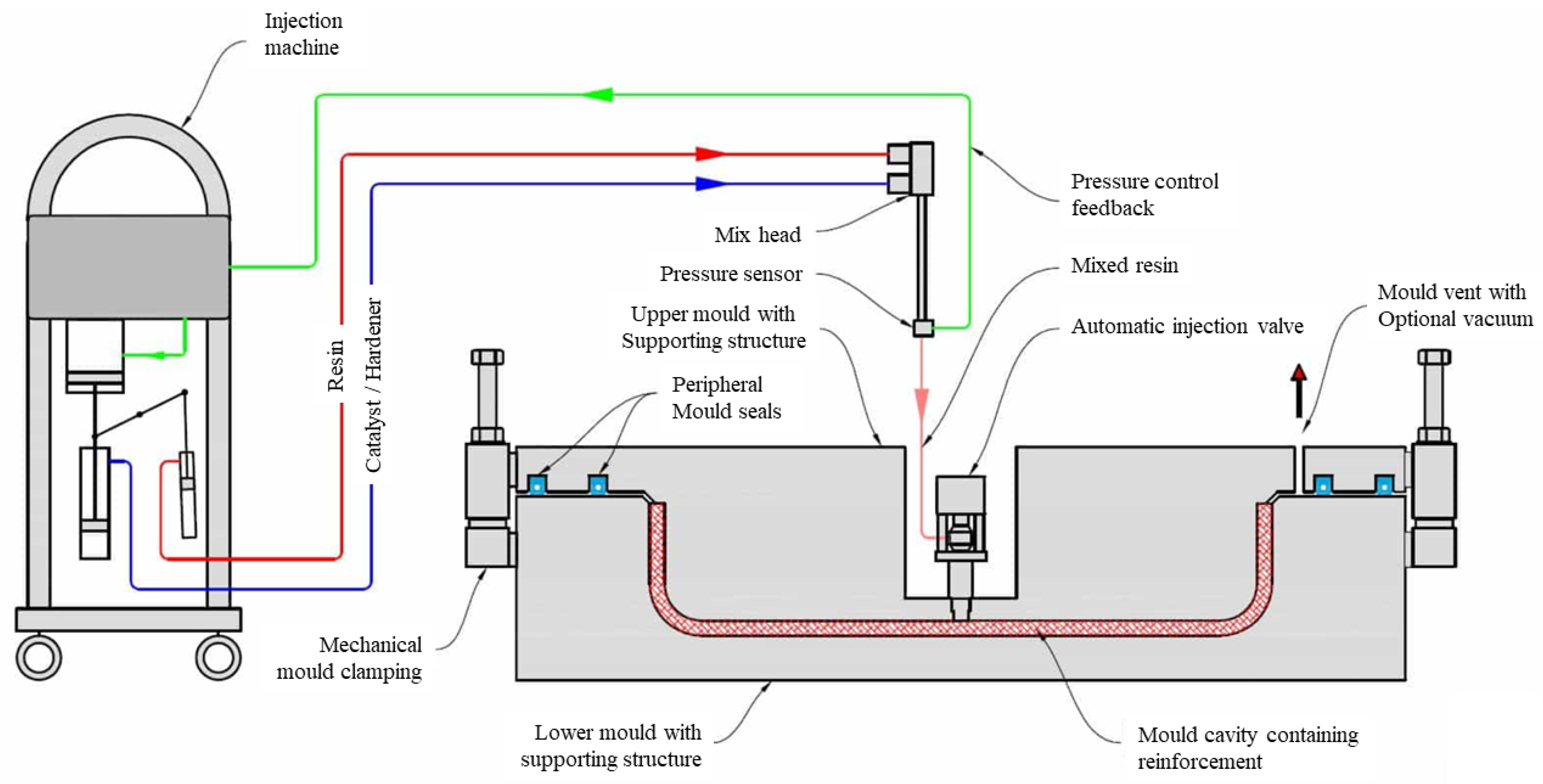

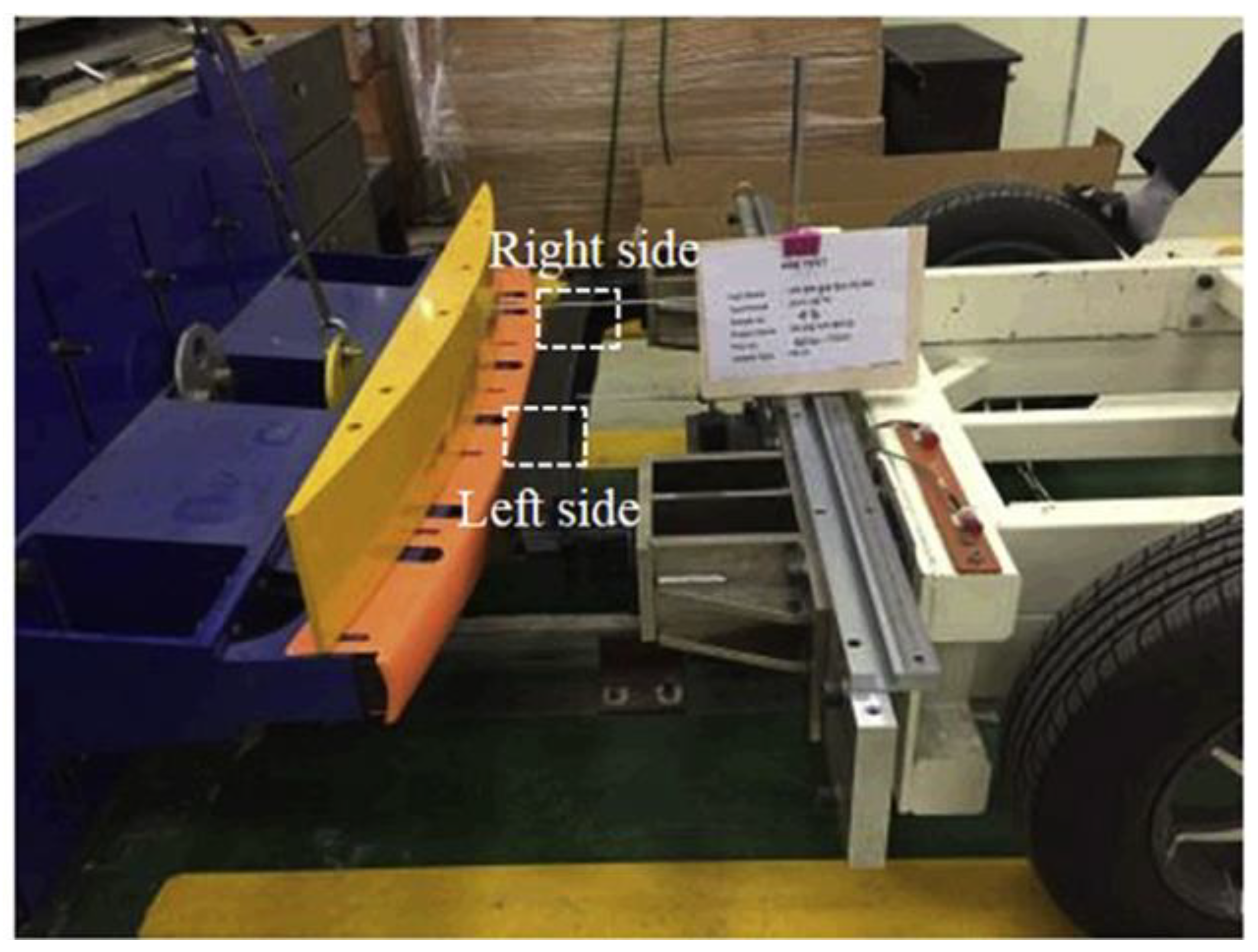

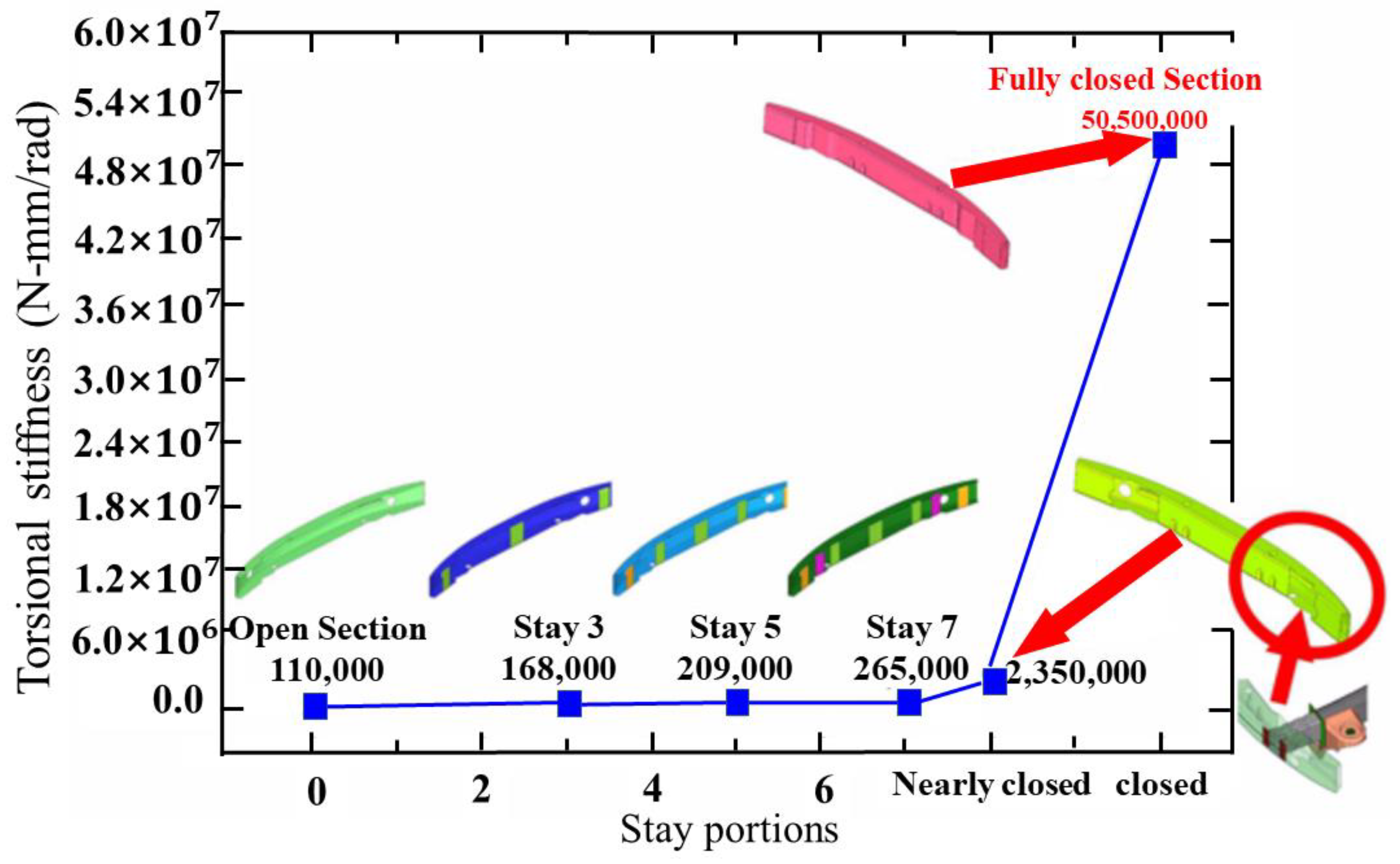
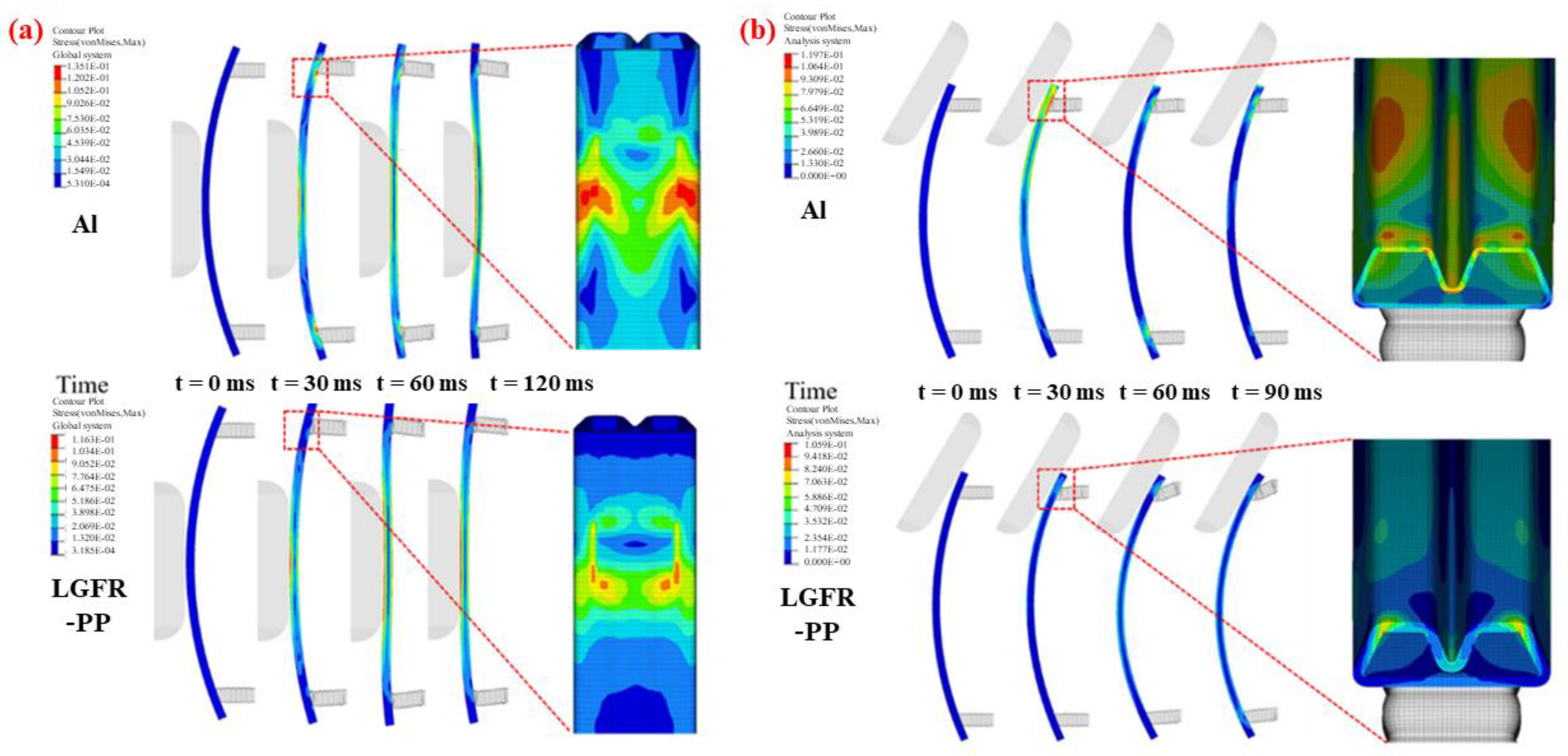

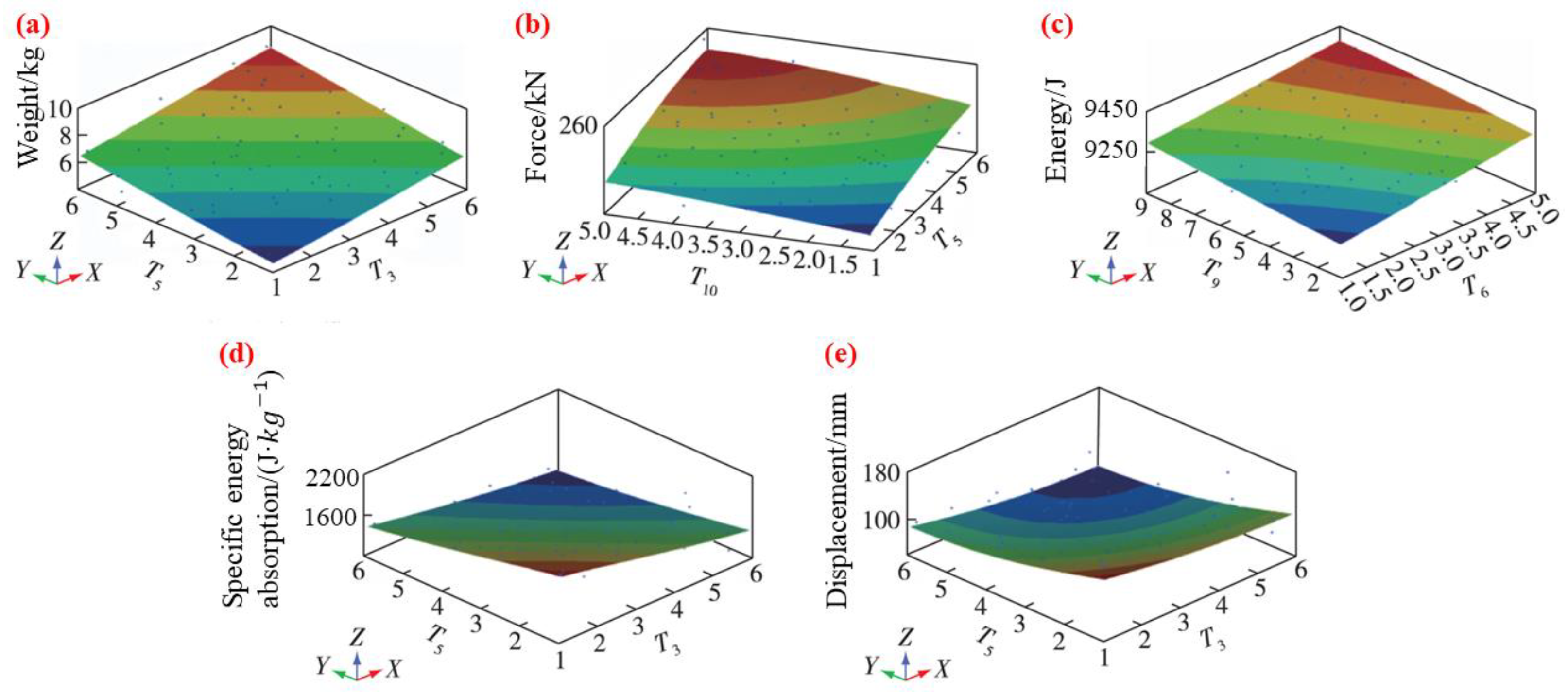
| Materials | Density (g/cm3) | Young’s Modulus (GPa) | Poisson’s Ratio (ν) | Yield Stress (MPa) | Flexural Stress (MPa) | Flexural Modulus (GPa) | Tensile Stress (MPa) |
|---|---|---|---|---|---|---|---|
| Conventional steel | 7.8–8.0 | 200–210 | 0.27–0.30 | 250–500 | 250–500 | 200–210 | 200–500 |
| Advanced high-strength steel | 7.8–8.0 | 210–300 | 0.27–0.30 | 500–1500 | 500–1500 | 200–300 | 500–1500 |
| Aluminum alloys | 2.7–2.9 | 60–80 | 0.3–0.4 | 200–500 | 200–500 | 70–80 | 200–500 |
| Glass fiber-reinforced polypropylene | 1.1–1.4 | 2–3 | 0.30–0.35 | 100–300 | 100–300 | 2–10 | 100–300 |
| Carbon fiber-reinforced polypropylene | 1.1–1.4 | 2–4 | 0.30–0.35 | 200–400 | 200–400 | 2–4 | 200–400 |
| Glass-mat-reinforced thermoplastics | 1.1–1.4 | 2–3 | 0.30–0.35 | 100–300 | 100–300 | 2–3 | 100–300 |
| Brand | Model | Year | Thickness/mm |
|---|---|---|---|
| Volkswagen | Teramont | 2021 | 2.50 |
| Tesla | ModelX 90D | 2016 | 2.20 |
| Volkswagen | Passat | 2019 | 1.84 |
| Cadillac | XT5 | 2016 | 1.72 |
| BYD | Qin 100 | 2017 | 1.60 |
| GAC MOTOR | M8 | 2021 | 1.57 |
| Audi | A3L | 2021 | 1.55 |
| Mercedes-Benzes | GLS | 2020 | 1.53 |
| Ford | EDGE | 2021 | 1.40 |
| Honda | CR-V | 2021 | 1.40 |
| Mercedes-Benzes | Smart Forfour | 2016 | 1.50 |
| Honda | Accord | 2018 | 1.50 |
| Ford | TAURUS | 2017 | 1.44 |
| HAVAL | H6 | 2016 | 1.30 |
| TOYOTA | VIOS | 2019 | 1.23 |
| TOYOTA | Future Toyota 86 Concept | 2017 | 1.10 |
| Part | Density (ρ)/ (kg·mm−3) | Elastic Modulus E/GPa | Poisson’s Ratio (ν) | Yield Stress/Mpa | Weight/ kg |
|---|---|---|---|---|---|
| Front bumper beam | 7.86 × 10−6 | 200 | 0.28 | 1000 | 3.989 |
| Energy-absorbing box | 7.83 × 10−6 | 200 | 0.3 | 414 | 1.307 |
| Thickness (mm) | Stress (MPa) | Deformation (mm) | Weight (kg) |
|---|---|---|---|
| 2/2 | 2532.4/2278 | 251.1/104.17 | 6.8/21.8 |
| 3/3 | 1764.4/1736.3 | 119.17/51.664 | 9.4/29.8 |
| 4/4 | 995.2/1012 | 64.889/28.446 | 12/37.8 |
| 5/5 | 737.13/742.62 | 40.503/17.895 | 14.6/45.8 |
| 6/6 | 549.55/555.83 | 26.864/11.893 | 17.2/53.8 |
| 7/7 | 439.29/442.51 | 18.774/8.3082 | 19.8/61.8 |
| Facilities | Colliders and Moving Walls | |
|---|---|---|
| Methods | Center collision | Angular collision |
| Speed | 4 km/h | 2.5 km/h |
| Reference height | 445 mm | 445 mm |
| Content brief | All parts are in good condition except the bumpers | |
| Contents | Canada CFVSS 215 | The US FMVSS 581 | The EU ECE R42 |
|---|---|---|---|
| Collider center collision | 8 km/h | 4 km/h | 4 km/h |
| Collider angular collision (60°) | 4.8 km/h | 2.5 km/h | 2.5 km/h |
| Content brief | Vehicle is usable | Bumper beam damaged only | Bumper beam damaged only |
Disclaimer/Publisher’s Note: The statements, opinions and data contained in all publications are solely those of the individual author(s) and contributor(s) and not of MDPI and/or the editor(s). MDPI and/or the editor(s) disclaim responsibility for any injury to people or property resulting from any ideas, methods, instructions or products referred to in the content. |
© 2023 by the authors. Licensee MDPI, Basel, Switzerland. This article is an open access article distributed under the terms and conditions of the Creative Commons Attribution (CC BY) license (https://creativecommons.org/licenses/by/4.0/).
Share and Cite
Du, B.; Li, Q.; Zheng, C.; Wang, S.; Gao, C.; Chen, L. Application of Lightweight Structure in Automobile Bumper Beam: A Review. Materials 2023, 16, 967. https://doi.org/10.3390/ma16030967
Du B, Li Q, Zheng C, Wang S, Gao C, Chen L. Application of Lightweight Structure in Automobile Bumper Beam: A Review. Materials. 2023; 16(3):967. https://doi.org/10.3390/ma16030967
Chicago/Turabian StyleDu, Bing, Qichang Li, Changqi Zheng, Suozhu Wang, Cong Gao, and Liliang Chen. 2023. "Application of Lightweight Structure in Automobile Bumper Beam: A Review" Materials 16, no. 3: 967. https://doi.org/10.3390/ma16030967
APA StyleDu, B., Li, Q., Zheng, C., Wang, S., Gao, C., & Chen, L. (2023). Application of Lightweight Structure in Automobile Bumper Beam: A Review. Materials, 16(3), 967. https://doi.org/10.3390/ma16030967





